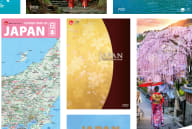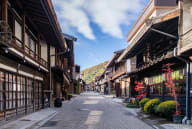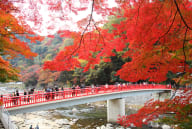
Miyagi Fresh, local, and absolutely delicious
A Culinary Journey in Miyagi
Nestled along the northeastern coast of Japan's Honshu Island, Miyagi Prefecture boasts a rich tapestry of geographical and climatic diversity. The climate of this prefecture is greatly influenced by sea breezes from Sendai city, resulting in mild weather throughout the year. Summers are somewhat cool and winters are fairly temperate. Stretching from the Pacific Ocean to the scenic mountains, Miyagi's fertile plains yield an array of renowned agricultural products.
The prefecture is particularly famous for its premium rice, contributing to its status as a key producer of sake. Additionally, Miyagi's orchards brim with succulent fruits, including apples and pears, while its coastal waters abound with fresh seafood, such as oysters and seaweed. Distinctive local delicacies, like the savoury Gyu-tan (grilled beef tongue) and Zunda (sweet edamame paste), offer a delightful taste of Miyagi's culinary heritage. Exploring Miyagi's local foods is not just a feast for the palate but a journey through its vibrant culture and landscape.
Come and savour the unique flavours of Miyagi, where every bite tells a story of tradition and natural bounty.
Zunda mochi (Sweet edamame rice cake)

What it is (ingredients)
Zunda Mochi is a traditional Japanese sweet from Miyagi, made of glutinous rice cakes (mochi) topped with a sweet and slightly savoury paste made from edamame (green soybeans). The paste, known as "Zunda," is made by boiling the edamame, mashing it, and mixing it with sugar and a pinch of salt to create a vibrant green, slightly chunky topping.
History/Origin
Zunda mochi has a long history in Miyagi and is believed to have been enjoyed since the Edo period (over 150 years ago.) There are various theories about the origin of the name "Zunda," one of which suggests it comes from a local dialect meaning "crushed beans." Traditionally, this sweet was made to celebrate special occasions and festivals, symbolizing prosperity and good fortune.
Where to Eat
You can enjoy Zunda mochi at various traditional Japanese confectionery shops, cafes, and restaurants throughout Miyagi Prefecture. It is particularly popular in Sendai, the prefectural capital, where many specialty shops offer fresh Zunda mochi and other Zunda-flavoured treats. Some shops offer the chance to make Zunda paste and pound mochi, enhancing your cultural experience.
When to Eat
Zunda mochi is enjoyed year-round, but the version made with edamame harvested from June to September, during the peak season for edamame, is especially delicious due to its lush, fresh flavour. It is also a common treat during local festivals and celebrations, where its vibrant colour and refreshing taste make it a festive and enjoyable sweet.
Indulge in the unique and delightful flavours of Zunda mochi and experience a taste of Miyagi's rich culinary heritage with this traditional green soybean rice cake.
Harako meshi (Salmon rice bowl)

What it is (ingredients)
Harako meshi is a traditional Japanese dish from Miyagi, consisting of salmon and salmon roe served over steamed rice. The key ingredient is fresh salmon, which is typically marinated in soy sauce, sake, and mirin (sweet rice wine), then boiled and served over rice cooked in the broth. The dish is often topped with salmon roe (ikura) for added texture and flavour.
History/Origin
Harako Meshi originated near the fishing port of Arahama in Watari Town, where "Harako" in the local dialect refers to baby salmon. It's said that Harako Meshi was served to Date Masamune, a Samurai who ruled Miyagi during the Edo period and remains popular today. Legend has it that he enjoyed it so much that its popularity spread to other regions.
Where to Eat
You can enjoy Harako meshi at traditional Japanese restaurants, seafood izakayas, and specialty shops throughout Miyagi Prefecture, especially in coastal cities like Sendai and Ishinomaki. Many establishments pride themselves on using fresh, locally caught salmon to prepare this iconic dish, ensuring an authentic and flavourful dining experience.
When to Eat
Harako meshi is enjoyed year-round, but it is particularly popular during the salmon fishing season in autumn when salmon are at their peak. The dish's hearty and satisfying qualities make it a favourite among locals and tourists alike, offering a taste of Miyagi's maritime traditions.
Delight in the rich flavours of Harako meshi and explore the culinary heritage of Miyagi with this delicious salmon rice bowl.
Gyu-tan : Beef tongue

What it is (ingredients)
Gyu-tan is a popular dish originating from Miyagi, featuring grilled beef tongue. The key ingredient is cow tongue, which is thinly sliced and typically marinated in a sauce made of soy sauce, sake, mirin (sweet rice wine), and other seasonings before being grilled to perfection. The result is tender, flavorful slices of beef tongue with a slight chewiness and rich umami taste.
History/Origin
Gyu-tan originated in Sendai, Miyagi's capital, during the post-World War II era when local chefs sought creative ways to utilize every part of the cow. It quickly became a regional delicacy, appreciated for its unique texture and umami-rich taste. Today, Gyu-tan is a popular dish that showcases Miyagi's culinary ingenuity and commitment to quality beef.
Where to Eat
You can enjoy Gyu-tan at specialty restaurants and izakayas throughout Miyagi Prefecture, particularly in Sendai and other major cities. These establishments often offer different cuts and styles of beef tongue, ensuring there's something to suit every palate. Gyu-tan is also commonly found at local food festivals and events, where it's served fresh off the grill.
When to Eat
Gyu-tan can be enjoyed year-round.
Experience the melt-in-your-mouth goodness of Gyu-tan and discover why this grilled beef tongue dish is a cherished part of Miyagi's gastronomic tradition.































































